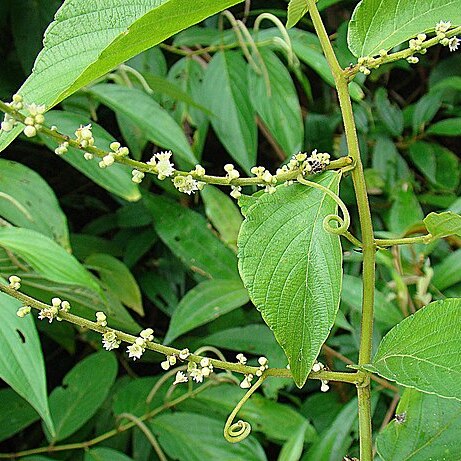Woody vines scrambling and climbing to 7–12 m. Leaves: petiole hairy; blade elliptic to ovate or lanceolate, 4–10 cm, base rounded to subcordate, margins serrate to crenate-serrulate, apex acute-acuminate, abaxial surface glabrous [densely hairy] except veins sparsely puberulent-pubescent, adaxial surface glabrous [densely hairy, glabrescent]. Inflorescences: racemelike portions 5–20 cm. Pedicels (0.5–)1–3 mm, densely hairy. Flowers: hypanthium densely [white to] brown-hairy externally, glabrous internally except at orifice; nectary lobes chartaceous. Schizocarps 6–13 mm, glabrous; samaras butterfly-shaped, wings reniform/1/2-elliptic, 7–14 × 2–6 mm.
Lianas, or scandent to arching shrubs, the tendrils at the bases of the inflorescences, the younger stems pubescent, the trichomes grey to brown. Leaves inconspicuously 3-nerved at the base, ovate or sometimes elliptic, acute, serrate, the teeth mostly glandular and remote, rounded to shallowly cordate basally, to 11(-13) cm long and 7(-9) cm wide, glabrous to sparsely pubescent above, more or less glabrous, appressed-pubescent on the veins to densely pubescent beneath; petioles 0.5-1.5(-2) cm long, pubescent, the stipules minute, deciduous.
A woody climber. It grows 7-12 m long. It has tendrils. The young stems are hairy. The leaves are 11 cm long by 7 cm wide. They are often heart shaped at the base. The flowers are as 5-8 in long heads. These are 8-18 cm long. The fruit has 3 wings. They are 5-7 mm long. The seeds are 3-4 mm long.

